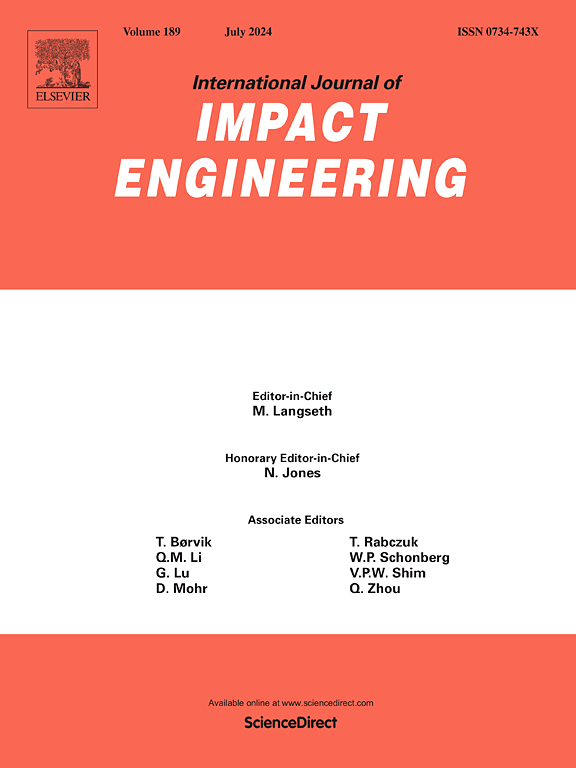用于彗星拦截器/ESA 空间探测器上 DISC 的创新型轻型紧凑防尘罩的性能评估
IF 5.1
2区 工程技术
Q1 ENGINEERING, MECHANICAL
International Journal of Impact Engineering
Pub Date : 2024-10-24
DOI:10.1016/j.ijimpeng.2024.105146
引用次数: 0
摘要
彗核喷射出的尘埃包含了早期太阳系形成和演变的宝贵信息。已经对多颗短周期彗星进行了实地研究,但几次近日点穿越大大改变了它们的原始状态。彗星拦截器是欧洲航天局选定的第一个实地研究原始动态新彗星的太空任务。在快速飞越彗星彗尾的过程中,尘埃粒子的超高速撞击不仅是重要的信息来源,也会对航天器及其有效载荷造成严重危害。在这里,我们将讨论对彗星拦截器有效载荷的尘埃撞击传感器和计数器(DISC)的防尘罩进行的评估测试,该仪器将直接暴露在彗星尘埃通量中。我们使用光气枪,以 5 公里/秒的速度射出毫米大小的粒子,其传递的时刻和动能代表了这次飞行任务的预期。我们将 DISC 面包板上的撞击效果与超高速撞击弹道极限方程的理论预测进行了比较。我们发现,只要对防尘罩的设计进行简单的改进,DISC 就能与预期的彗星环境相匹配。本文章由计算机程序翻译,如有差异,请以英文原文为准。
Performance assessment of an innovative light and compact dust shield for DISC onboard Comet Interceptor/ESA space probes
The dust ejected by cometary nuclei encodes valuable information on the formation and evolution of the early Solar System. Multiple short-period comets have been studied in situ, but several perihelion passages considerably modified their pristine condition. Comet Interceptor is the first space mission selected by the European Space Agency to study a pristine dynamically new comet in situ. During a fast flyby through the comet coma, hypervelocity impacts with dust particles will represent not only an important source of information, but also a serious hazard to the spacecraft and its payload. Here we discuss the assessment tests performed on the dust shield of the Dust Impact Sensor and Counter instrument (DISC), part of the Comet Interceptor payload, which will be directly exposed to the cometary dust flux. Using a Light-Gas Gun, we shot mm-sized particles at 5 km/s, transferring momenta and kinetic energies representative of those foreseen for the mission. The impact effects on the DISC breadboard were compared to theoretical predictions by a ballistic limit equation for hypervelocity impacts. We find that, with a simple improvement in the dust shield design, DISC is compatible with the expected cometary environment.
求助全文
通过发布文献求助,成功后即可免费获取论文全文。
去求助
来源期刊

International Journal of Impact Engineering
工程技术-工程:机械
CiteScore
8.70
自引率
13.70%
发文量
241
审稿时长
52 days
期刊介绍:
The International Journal of Impact Engineering, established in 1983 publishes original research findings related to the response of structures, components and materials subjected to impact, blast and high-rate loading. Areas relevant to the journal encompass the following general topics and those associated with them:
-Behaviour and failure of structures and materials under impact and blast loading
-Systems for protection and absorption of impact and blast loading
-Terminal ballistics
-Dynamic behaviour and failure of materials including plasticity and fracture
-Stress waves
-Structural crashworthiness
-High-rate mechanical and forming processes
-Impact, blast and high-rate loading/measurement techniques and their applications
 求助内容:
求助内容: 应助结果提醒方式:
应助结果提醒方式:


